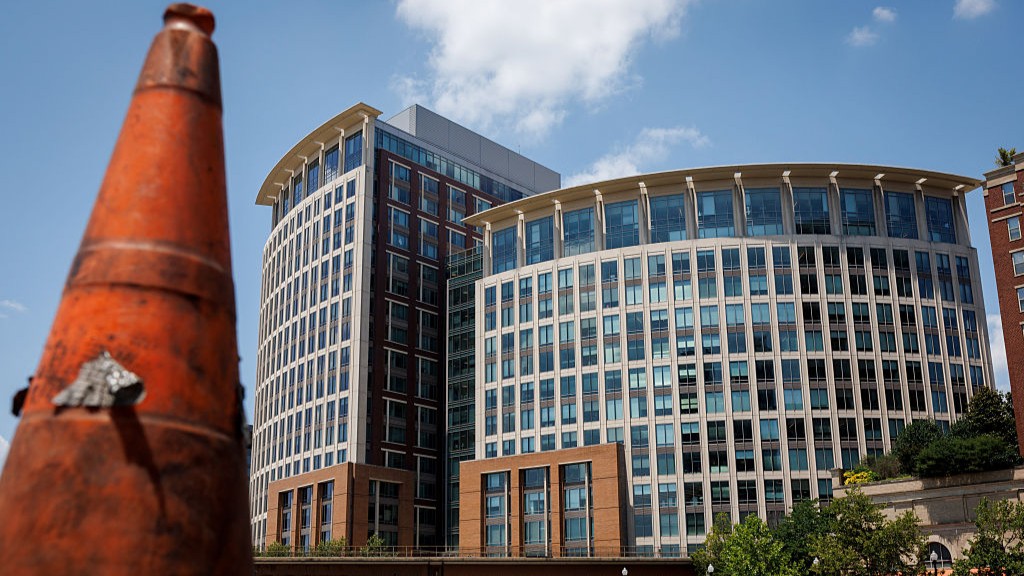NASA Eyes March 2006 for Next Shuttle Flight
NASA's nextspace shuttle will likely launch in March 2006 and not be the Atlantis orbiteras previously planned, space agency officials said Thursday.
Instead,the Discovery orbiter - which returned to Earth last week after concluding NASA's14-day STS-114 mission - willbe the next to fly, which will ease future launch schedules and allow engineersadditional time to complete troubleshooting and repair work on external tanksto prevent foam shedding during launch, shuttle officials said.
"We think,really, that March 4 is the timeframe we're looking at," Bill Gerstenmaier,NASA's foam investigation lead and newly-appointed associate administrator forspace operations, told reporters during a Thursday press conference. "It lookslike we're going to have to do some repair...on the tank."
Gerstenmaiersaid the decision to push toward a March 2006 launch date is not final, and ispending another two weeks of troubleshooting efforts by tank engineers. Thedelay would pass over launch windows in November and January 2006. Last week,Gerstenmaier saidit was unlikely that Atlantis would make a four-day launch window beginning Sept.22.
Engineersare once again poring over external tank foam debris after observing a nearly1-pound piece separatefrom Discovery's external tank during the shuttle's July 26 launch. The foamdid not strike Discovery, but was the same type of debris concern that doomed Columbia'sSTS-107 mission in 2003.
Columbia'sleft wing was struck by a 1.67-pound piece of foam insulation during launch,critically wounding the spacecraft and compromising its heat shield. The resultingdamage cased the orbiter to break apart during reentry on Feb. 1, 2003, killingits seven-astronaut crew.
NASA spenttwo years trying to prevent such foam loss from endangering shuttles againbefore launching Discovery spaceward last month. After observing the foamshedding during Discovery's launch, shuttle officials pledgednot to launch another orbiter until the issue was solved.
Breaking space news, the latest updates on rocket launches, skywatching events and more!
Gerstenmaiersaid engineers at NASA's Michoud Assembly Facility in New Orleans, Louisiana,where the external tanks are built, plan to dissect portions of completed tanksto better understand how to make repairs for the next shuttle flight.
The delaycomes one day after the releaseof a final report from Stafford-Covey Return to Flight Task Group, an independentpanel that watched over NASA's effort to resume shuttle flights after the 2003Columbia disaster. That report also included a minority report of personalobservations from some task group members, including a scathing critique of thespace agency's return to flight effort that faulted, among other things, NASA'slaunch date setting practices as unrealistic.
"Going allthe way out to March [is] an effort to give people some time for a planninghorizon," said Michael Griffin, NASA's top administrator, told reporters duringthe press conference. "We are trying to insert the necessary conservatism inthis and are giving ourselves what we hope is plenty of time."
Griffinmaintained that the delay will not hinder efforts to complete construction ofthe International Space Station (ISS) and meet NASA's obligations to its internationalpartners.
"Absentmajor problems, we believe we can essentially complete the International SpaceStation by the end of [the shuttle's] retirement," Griffin said.
NASA'sthree remaining orbiters are slated for a 2010 retirement.
"It doesn'tseem to be a major impact at first look," Gerstenmaier said of the March 2006launch target.
Gerstenmaierserved as NASA's ISS program manager before being appointed to head the agency'sspace operations effort.
Shuttleswap
Gerstenmaiersaid that by targeting March 2006 for the next shuttle flight, shuttleengineers now have time to turn Discovery - which is expectedto return to NASA's Kennedy Space Center in Florida from its California landingsite on Saturday - around for the next flight.
Under theprevious plan, Atlantis was tapped to launch its STS-121 mission - NASA'ssecond return to flight mission - then turn around and launch STS-115, aconstruction flight to the International Space Station (ISS). But the newschedule should be more manageable, shuttle officials said.
"We can nowgo Discovery, Atlantis and then back to Discovery," Gerstenmaier said. "Whatthat gives us is not just one flight opportunity, but several flights."
NASA'sthird remaining orbiter, the shuttle Endeavour, is currently in the middle of amajor modification period.
Join our Space Forums to keep talking space on the latest missions, night sky and more! And if you have a news tip, correction or comment, let us know at: community@space.com.

Tariq is the Editor-in-Chief of Space.com and joined the team in 2001, first as an intern and staff writer, and later as an editor. He covers human spaceflight, exploration and space science, as well as skywatching and entertainment. He became Space.com's Managing Editor in 2009 and Editor-in-Chief in 2019. Before joining Space.com, Tariq was a staff reporter for The Los Angeles Times covering education and city beats in La Habra, Fullerton and Huntington Beach. In October 2022, Tariq received the Harry Kolcum Award for excellence in space reporting from the National Space Club Florida Committee. He is also an Eagle Scout (yes, he has the Space Exploration merit badge) and went to Space Camp four times as a kid and a fifth time as an adult. He has journalism degrees from the University of Southern California and New York University. You can find Tariq at Space.com and as the co-host to the This Week In Space podcast with space historian Rod Pyle on the TWiT network. To see his latest project, you can follow Tariq on Twitter @tariqjmalik.
